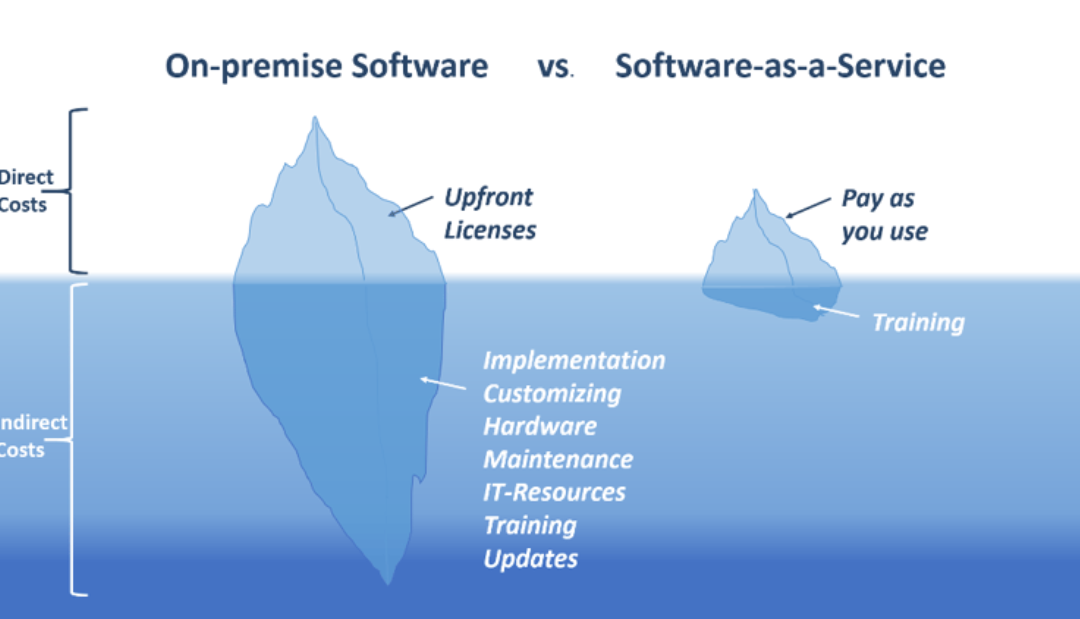In today’s computing technology, companies offer numerous opportunities to improve productivity and dramatically reduce operating costs. The challenge, however, is whether to improve the on-premise solutions or completely shift to cloud-based solutions.
The whirlwind technology growth has changed how businesses manage their operations, and choosing the correct software for your needs is vital for business success. Consider several factors when deciding between cloud-based and on-premise software. This article will clearly outline the differences between the two options. We will discuss critical aspects such as scalability, cost, ease of use, and security. The information will help you make an informed decision that aligns with your business needs.
Defining On-Premise and Cloud-Based Software
On-premise Software is the traditional method of installing applications directly on a company’s servers or personal devices. The IT team then takes over maintaining and managing the software within the company premises.
Cloud-based software, on the other hand, popularly known as software as a Service (SaaS), refers to hosting applications on remote servers that third-party service providers manage. Users can only access the software online, dismissing the need to install it on personal devices or servers.
Before settling on either on-premise or cloud-based software, here are a few factors considerations you need to scrutinize:
Cost Considerations
Compared to the cloud-based option, the initial cost of implementing on-premise Software is relatively high, and you must be ready to invest in the installation fee, hardware, and licenses. Besides, the business carries the burden of ongoing on-premise software costs because they will need updates, support, and maintenance.
Conversely, cloud-based Software functions typically on a subscription basis, translating to lower initial costs. Instead of purchasing hardware and licenses, your business will pay an annual or monthly fee based on the number of users or the overall usage, and the subscription fee usually includes maintenance and support, lowering cloud-based software costs.
Security and Compliance
One of the crucial considerations when choosing software is security. For the on-premise software, businesses have complete control of their data and can take any security measures possible. This option is advantageous if your business is strict with data protection or you want to implement customized security protocols.
Maintaining a high level of on-premise software security requires dedicated IT resources which can be time-consuming and costly.
With cloud-based software security, the responsibility lies entirely with the service provider. Even with service providers investing heavily in robust precautions to ensure the safety of customers’ sensitive information, businesses still have concerns about trusting a third party for their data security.
In compliance matters, cloud-based software providers typically follow strict industry-specific rules, but the business must confirm before settling on a service provider.
Scalability and Flexibility
On-premise Software is often challenging to scale as the business advances. You must always purchase additional software and hardware to expand storage or processing capabilities. As the business grows, you must also increase IT personnel to support on-premise software scalability.
On the contrary, cloud-based software is by far more flexible and scalable. As your business expands, you can easily and quickly adjust your subscription to accommodate more data, user access, and processing power. With cloud-based software scalability, you will effectively respond to business growth and avoid outgrowing your software option.
Accessibility and Collaboration
Usually, on-premise software accessibility is limited. Users must use the company network or Virtual Private Network (VPN) to access the software, which defines collaboration and remote work.
Cloud-based software accessibility is much more enhanced compared to on-premise Software. Users can access the software from different locations if connected to the internet. Workers can easily collaborate and work remotely anytime, increasing productivity.
Updates and Maintenance
The on-premise software updates are the responsibility of the organization’s IT team. The process can be time-consuming and often requires regular downtime for system updates. Besides, organizations must set aside resources to ensure the software remains secure and up-to-date.
The service provider handles cloud-based software updates and maintenance. The service providers ensure prompt implementation of security patches and the latest features. Therefore, the burden on the IT team and downtime associated with effecting updates is limited.
Data Ownership and Control
Businesses have complete control over their data when they use
On-premise software due to storage of data in the infrastructure within their premise. On-premise software is excellent if your business is strict on data management regulatory or policy requirements.
As much as cloud-based software has rigid data privacy and security policies, organizations are only somewhat comfortable with third parties owning and controlling their data. To be clear on your cloud-based software data ownership, it is vital to closely review your service provider’s agreements and understand how they will manage, protect and store your data.
Making an Informed Decision
In conclusion, your business-specific needs will help determine whether you can settle with cloud-based or on-premise software. Although on-premise Software provides greater customization and control, it may require high initial cost and ongoing maintenance. On the other hand, Cloud-based Software offers lower initial costs, accessibility, and scalability, making it more suitable for many organizations.
By closely examining the abovementioned factors, you can make a clear decision that matches your business objectives and long time prosperity. Even with your choice, staying ahead of the current development in software technology and the best practices in the industry will help your business remain competitive in the market.
Article Source
Software as a Service (SaaS): Definition and Examples (investopedia.com)
What is Cloud Computing? Pros and Cons of Different Types of Services (investopedia.com)
Cloud Versus On Premises: Advantages And Disadvantages Of Both Models (forbes.com)

